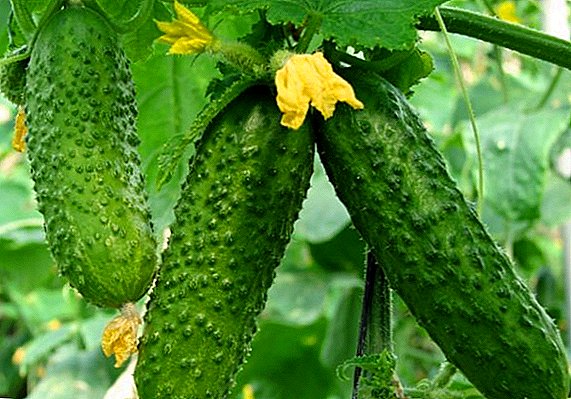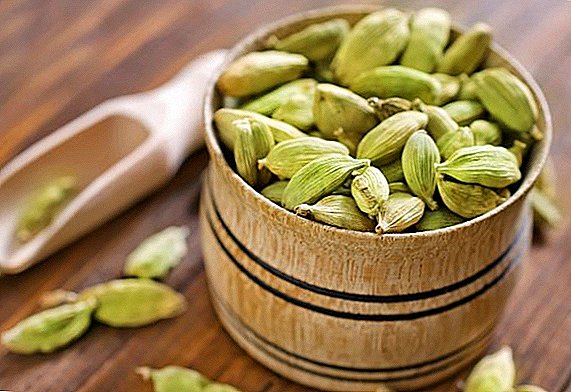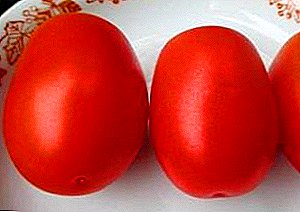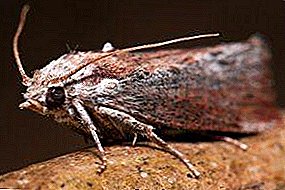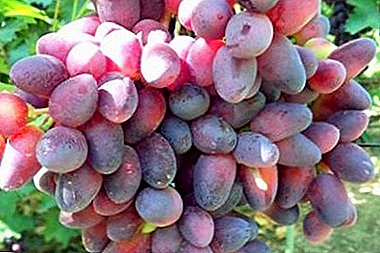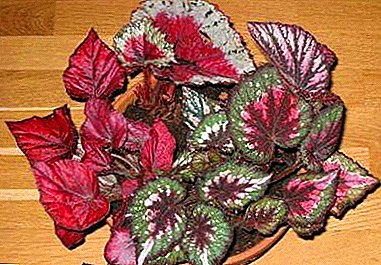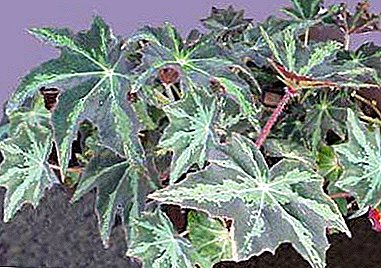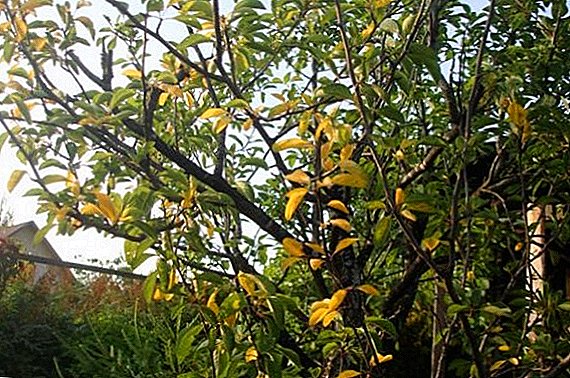 Among the fruit trees plum is considered one of the most stable and unpretentious, but it can be attacked by the disease. The first messengers of the fact that something is wrong with the plant are the yellow leaves that appeared at the height of summer. The reasons may be different, therefore, it is necessary to act in each case in a special way. In order not to be mistaken, read the information below.
Among the fruit trees plum is considered one of the most stable and unpretentious, but it can be attacked by the disease. The first messengers of the fact that something is wrong with the plant are the yellow leaves that appeared at the height of summer. The reasons may be different, therefore, it is necessary to act in each case in a special way. In order not to be mistaken, read the information below.
Landing place
If a tree begins to change the color of foliage and lose it from the top, then, most likely, the reason for this is groundwater bedding. You may have taken this factor into account when planting the plant, but when the plum reaches the age of five, its root system grows deep into the soil. Therefore, if for a young tree the depth of groundwater was large, an adult plant can easily reach them with roots. This problem can be solved by transplanting or draining the soil, or forming a hill.
Another reason, similar in appearance and character, is frequent flooding of the site spring floods or after long rains. In this case, the tree must be transplanted to a hill.  Freshly planted plums may begin to turn yellow leaves. Perhaps the reason for this is lack of lighting. On a sunny day, look carefully if the shade does not fall on a seedling from larger closely growing plants or structures. If the answer is yes, then immediately transplant the plum, so that later you do not have to cut down other trees.
Freshly planted plums may begin to turn yellow leaves. Perhaps the reason for this is lack of lighting. On a sunny day, look carefully if the shade does not fall on a seedling from larger closely growing plants or structures. If the answer is yes, then immediately transplant the plum, so that later you do not have to cut down other trees.
Important! When planting a tree you need to be extremely careful. If the root system is damaged, then the sapling will begin to languish and it will be necessary to put a lot of effort so that it gets stronger and settled down.
Lack of watering
Normally, when there is a lack of precipitation, an adult plum needs 6-8 buckets of water every ten days. A young tree, depending on its age, needs from three to five buckets for ten days. If you pour out less water or spend less water, the tree may start to turn yellow and dry out.
Freezing branches
Sudden temperature drops are destructive for wood. If, with the advent of heat, you soon opened the root system of the plum, then, most likely, it will freeze during spring frosts.
If the root system of a plant is affected, it loses nutrients and begins to die. If the root system is damaged, you need to regularly feed the tree with fertilizers and hope that it will have enough strength to recover on its own.  Only branches can suffer from night frosts - then they just need to be cut off.
Only branches can suffer from night frosts - then they just need to be cut off.
In order for the plum not to suffer from frost, it should be carefully prepared for the winter and not to remove the shelter ahead of time.
Did you know? Plum in England is called the "royal fruit", because Elizabeth II eats two plums before breakfast each morning, and then starts eating.
Nutritional deficiencies
With a lack of nutrients, the foliage on the tree reads yellowing from below. Young shoots are also affected.
With a lack of soil nitrogen the foliage turns a light green color, then slowly turns yellow. The gains are weak and thin. The growth of the whole tree may stop. Conversely, if the soil is saturated with this element, then the plum grows quickly, becomes covered with dark, uneven foliage of large size. The period of flowering and fruiting comes with a significant delay.
If on your site sandy and sandy soils, there may be a shortage magnesium. Leaves are covered with yellow or red spots between the veins. Then begins the death of the leaf from the edge, its twisting and wrinkling. The tree sheds its leaves early, the fruits begin to fall, even green ones.  If the plant is not enough phosphorusthen its leaves get a bronze or purple shade, after that they may turn black and dry. The tree blooms sparsely and briefly. Fruits form small and tasteless.
If the plant is not enough phosphorusthen its leaves get a bronze or purple shade, after that they may turn black and dry. The tree blooms sparsely and briefly. Fruits form small and tasteless.
Potash starvation leads to disruption of water balance. In a sick tree, the leaf twists upward, acquires a yellow rim, then is shaded by a blue color, turns yellow, and at the end turns black.
In time, the established type of fasting is corrected by making the missing element in the soil.
If there is a shortage of elements in the soil, mineral fertilizers should be used: nitrogen, phosphate, potash.
Diseases
Diseases and pests can also significantly change the appearance of the plant.
Verticillosis
 This is a fungal disease. Spores from the soil through the damaged root system fall into the tree. Growing, the mycelium clogs in the trunk of the tubule along which the juice moves. As a result, the leaves are deprived of food and, as a result, begin to die off. They turn yellow, curl up and fall off.
This is a fungal disease. Spores from the soil through the damaged root system fall into the tree. Growing, the mycelium clogs in the trunk of the tubule along which the juice moves. As a result, the leaves are deprived of food and, as a result, begin to die off. They turn yellow, curl up and fall off.
At the first manifestations of the disease, it is necessary to process the plum with “Previkur” or “Topsin-M” - this is done before flowering and after. If the symptoms of the disease became visible only at the top, then the fungus, most likely, has already hit the entire plant, and it can only be cut down and burned. The ground where the tree grew should be treated with disinfectants.
Did you know? In ancient times in the Czech Republic, a person who committed a bad deed went to repent to a priest. He could let go of a sin, if only the one who asks for it will work it out. As a rule, mining was the landing of the plum on the road. Therefore, now in the Balkans along these roads grow these trees.
Monilioz
Also a type of fungal disease - affects the plant through the pistils of the flower, then spreads to the foliage and young branches. The disease is activated at low temperatures from -0.6-1.5 ° C and with strong cold winds.
If blackening of color is noticed, then immediately treat the tree with Horus, because if the flowers begin to fall off and the foliage darken, you will be left without a crop. Cut the affected branches and burn them.
Learn more about stone bone moniliosis: prevention and treatment of moniliosis on cherries and cherries, apricots.
As a preventive measure of the disease, it is recommended to treat the garden "Mikosanom-V", Bordeaux mixture, "Horus", "Early" before and after flowering, and then another 2-3 times with an interval of two weeks. The last treatment is preferably carried out after harvest.
Video: fight against stone bone moniliosis
Important! If signs of moniliosis were found on a single plant, treat all the trees in the garden, as the fungus spreads with the wind, rain, insects.
Coccomycosis
Another fungal disease - usually affects the foliage and shoots, sometimes occurs on the fruit. Signs of illness are small red-brown spots that gradually increase in size and cover the entire surface of the leaf. He begins to bend in a boat, and within it are pinkish mushroom spores. Gradually, the sheet dies and falls. If the disease has seriously affected the plum, then the spores of the fungus are visible in the cracks of the bark.  Copper sulfate and Bordeaux liquid can help with the scourge. It is processed as a tree, and the earth around it.
Copper sulfate and Bordeaux liquid can help with the scourge. It is processed as a tree, and the earth around it.
Read also about copper sulphate: application in gardening, harm and consequences of poisoning of the human body.
Chlorosis
With this disease in the midst of summer, the leaves on the top of the plum become pale yellow, then turn white and fall off. Gradually, the disease spreads to the bottom of the crown. This happens for several reasons:
- alkaline soil (did a lot of lime have manure);
- carbonate soil;
- lack of iron salts;
- freezing of the root system;
- oxygen starvation of roots due to soil clogging.
At the initial stage of the disease, the plum can be treated with 2% iron sulphate or anti-chlorozin. Use Hilat to feed the plant.
Video: more on plant chlorosis
Plum aphid
When attacking microscopic pests, the leaves of the tree turn yellow and curl. Aphid spreads with great speed, and to destroy it is not so easy due to the fact that it settles on the back side of the piece and deforms its edges, so the drops of poison when spraying do not reach the goal.
We advise you to read about the fight against aphids on plums, the use of folk remedies against the pest.
Damaged branches should be cut and burned, and then treated with an extract of chamomile, bitter wormwood, garlic, tops of potatoes, tomatoes, or soap and mustard. And in early spring, the treatment should be carried out by Inta-Viry, Decis or Iskra. 
Fight against diseases of plums: reviews

Only 1. Do not overdo it. Copper is still toxic not only for fungi, but for all living things in general. Too much of it is not good. 2. copper interferes with germination of spores of the fungus, but only that. If the spores have sprouted, the leaves have withered, then they must be cut off, it can no longer be cured. So copper is a preventive measure and if you don’t be lazy from an early spring, then most likely the result will be. 3. there are so-called. systemic fungicides that can lime a mushroom, for example in the soil, and as a preventive measure, they are much more effective.

As we see, it is not easy to cope with any ailment and there are many losses from it. Therefore, it is better to prevent the problem than to fight with it. To do this, follow all the rules for the care of the plum. And if it already happened that the tree was badly damaged, then it is better to uproot it than endanger the neighboring ones.


